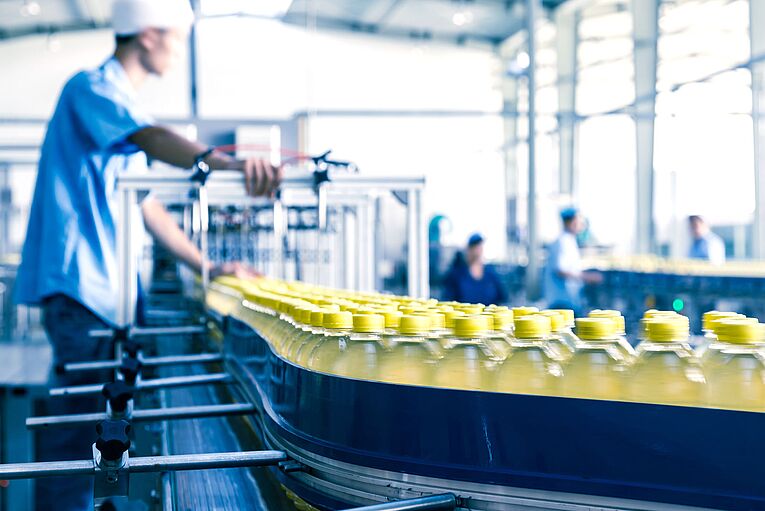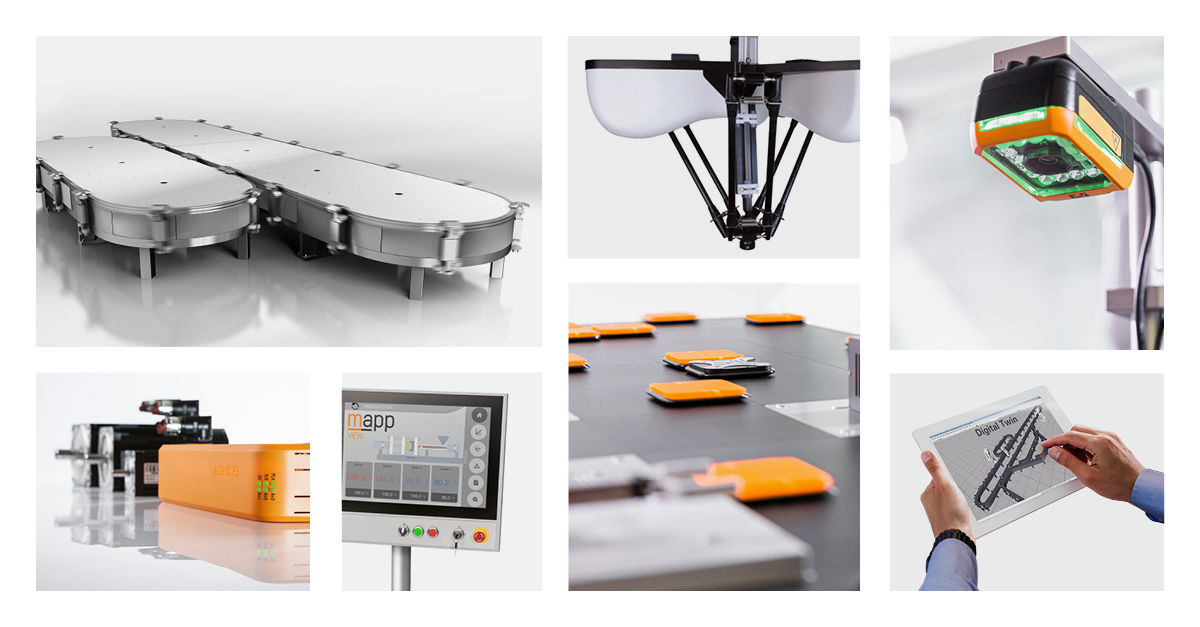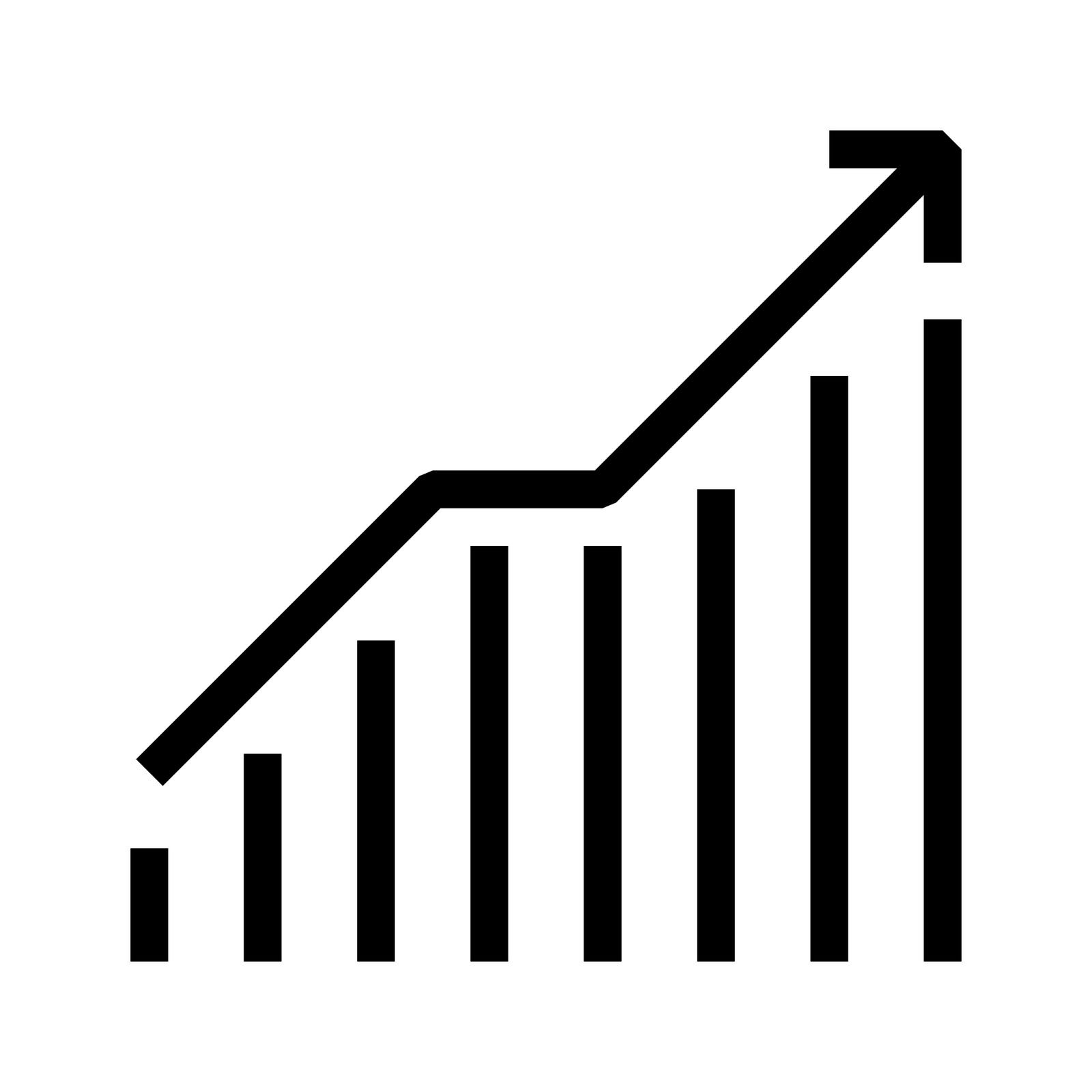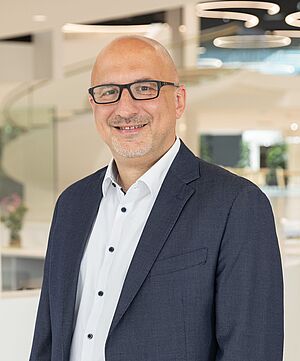
Off-the-chart speed with an off-the-shelf solution
B&R reACTION distributes computational load to boost performance of time-critical processes
B&R reACTION distributes computational load to boost performance of time-critical processes

Turbulent times call for adaptive organizations and leaders with vision. Can the same qualities that help navigate change in the boardroom help master it in the production hall?
The past few years can be summed up in a four-letter word. No, not that one. The word is VUCA – an acronym used to describe environments that are Volatile, Uncertain, Complex and Ambiguous. A perfect storm of global crises has rocked markets in unpredictable ways and made companies deal with the forces of constant change like never before. As the world grows more interconnected every day, these forces – and their impact on businesses – are likely to intensify.
A future dominated by disruption can be a problem or a promise; it's all a matter of perspective. Thought leaders in the area of management and organizational culture propose ways for us to thrive under VUCA conditions by adapting our teams and our mindsets. To master the dramatic changes in today's business environment, however, we must adapt not only in the boardroom, but also in the production hall. To stake our claim on a VUCA future, we need machines and lines that are as adaptive and resilient as our best leaders.
For much of its history, industrial manufacturing has been all about productivity and economies of scale. You could enjoy many years of success with a small number of products, simply by scaling up volume and improving efficiency. More recently, however, e-commerce began conditioning consumers to expect faster and faster delivery of increasingly personalized products. And as social media trends come and go, sudden changes in demand become more and more common.
Then, along came a global pandemic. Stay-at-home orders propelled e-commerce forward by years virtually overnight. Online and direct-to-consumer (D2C) sales doubled and tripled, and companies pivoted business models on the spot to survive. Now, even as stores reopen, the share of consumers who purchase most or all of their products online remains elevated. Consumer behavior has shifted, and there is no going back.
But consumer behavior is not the only area where recent crises have catalyzed existing trends. The dramatic global impact of localized lockdowns and port closures has highlighted the risk of supply chain disruptions and accelerated the trend toward reshoring and nearshoring. Even more momentum has been added as geopolitical conflicts impact fuel and freight costs, and climate change drives efforts to improve sustainability.
Volatility, Uncertainty, Complexity and Ambiguity
The acronym VUCA describes the forces shaping today's business environment. Market changes that used to be gradual and predictable are now sudden and unexpected. Paradigm shifts in technology that used to happen once in a generation now happen every few years. The systems involved are increasingly intertwined, and it's getting harder and harder to decipher cause and effect.
Vision, Understanding, Clarity and Adaptability
The best way to deal with a dilemma is to transform it from a threat into an opportunity. The challenge of VUCA contains its own solution: In times of turbulence, successful leaders respond with vision, understanding, clarity and adaptability. The same qualities are also needed by manufacturing systems and the teams who create them. To stay productive and profitable, manufacturers and machine builders need an automation partner who shares their vision, understands what they are up against and offers a clear path forward.

Metaphorically speaking, mass production is like a cargo ship – excellent at moving large volumes in a straight line, yet unfit to change course quickly when the situation demands. And quick changes are exactly what today's manufacturing systems must be able to handle. Consumer demands have brought an explosion in product variation and customization. D2C strategies and sustainability require frequent changes in packaging format and materials.
Batch sizes are shrinking and changeovers are happening at shorter and shorter intervals. Different products have different needs, but conventional lines are designed to perform processes in a rigid sequence. Servo technology can provide a certain amount of flexibility, but as changeovers become more frequent, downtime for cleaning and retooling eats away at overall equipment effectiveness (OEE) and shrinks profit margins.
Doing these things requires an ability to quickly accommodate all types of changes – in batch size, product format, packaging materials, grouping arrangement and more – with as little downtime and manual intervention as possible. Instead of massive cargo ships, what today's VUCA manufacturing environment calls for are dynamic, high-tech racing yachts able to navigate whatever unforeseen challenges appear in their path. In other words, what's needed is adaptive manufacturing.
To handle the rapid changes required by today's markets, manufacturing systems need a new set of capabilities. With the right combination of today's most advanced automation technology, there emerges a synergy that gives them this unprecedented power – the power to adapt.
Adaptive solutions help producers stay profitable with an increasing variety of products by enabling on-the-fly changeover with minimal downtime. With a modular layout and plug-and-play connectivity, they ensure fast time-to-market for new products. They make it easy to scale output without a corresponding increase in footprint and readily accommodate future products without sending machine builders back to the drawing board every time.

The right combination of today's most advanced automation technology gives manufacturing systems unprecedented powers of adaptability.
Mechatronic product transport – The adaptive backbone
Track-based and planar product transport systems enable continuous control of each product’s movement through a dynamic manufacturing process. Multiple shuttles synchronize with variable spacing to carry products of any shape. Electromagnetic diverters split and merge production flow at full speed. Modular segments allow unlimited layout possibilities and easy scaling and reconfiguration.
Robotics and machine vision – Hand-eye coordination
With perfect synchronization of lighting and image capture, machine vision detects the shape and orientation of passing products. Robots can adapt their movement and shuttles can adjust their spacing to perform highly precise processing and handling operations while in motion at high speeds.
Simulation and digital twins – Where it all begins
Adaptive manufacturing starts with simulation-based design. See the system in action, test feasibility and visualize its potential, all without any investment in hardware. The same simulation later serves as proof of concept for performance benchmarking. Over the lifetime of the machine, a digital twin makes it possible to refine and verify processes offline before implementing them on the shop floor.
A conventional production line is typically a series of different machines – for example a filler, a capper and a labeler. These are separated by infeeds and outfeeds, and products are transferred between a variety of mechanical conveyor systems along the way. An adaptive solution replaces these mechanical conveyors with mechatronic product transport – either a track system like B&R's SuperTrak and ACOPOStrak or a magnetic levitation system like ACOPOS 6D.
Rather than being handed off between systems and spending deadtime waiting in buffers and accumulators, each product is controlled independently and seamlessly throughout the entire production line. This one difference has a dramatic impact on what the line can do. Rather than forcing products to conform to a rigid sequence of processes, it is the sequence of processes that now conforms to the needs of each product. The requirements of each new batch can be accommodated on the fly without costly downtime for changeover.
It becomes possible to produce small batches – even batches of one – at unit prices comparable to mass production. Each product can have a different shape and size, and each can follow a unique path to the processing stations it requires. Tightly synchronized around this mechatronic backbone, perfectly orchestrated processing brings dramatic improvements in all three factors of OEE: availability, performance and quality.
 |
|
 |
|
 |
|
In markets where success is no longer guaranteed by productivity alone, manufacturers are investing in adaptability. To maximize the return on this investment and make customization and personalization profitable, they must achieve adaptability without compromising OEE. To evaluate the total cost of ownership for their manufacturing assets rather than simply capital expenditures, today's leading manufacturers take a complex set of factors into account.
This is the case in a rapidly growing range of industries. Leading the way is consumer packaged goods, where many companies are adding adaptive lines dedicated to e-commerce orders. Pharmaceuticals and medical device assembly are discovering that adaptive manufacturing solutions enable them to increase production density and get more output from limited floorspace (ppm/sqm). Not only that, they are uniquely able to reduce waste and enable full product traceability.
Other types of assembly, like electric vehicle batteries, are benefiting from the productivity and capacity boost, even without frequent batch changes. Here, adaptive solutions are helping manufacturers react quickly to market demand and increase productivity rapidly with limited or no impact on footprint.
Adaptive manufacturing supports reshoring and nearshoring as well as sustainability. Instead of a large centralized factory dedicated to one product line, companies can have highly flexible regional plants able to produce multiple products. This reduces shipping and warehousing costs and especially energy consumption. Instead of offshore production and long, expensive trips in containers, adaptive manufacturers can fulfill custom orders overnight.
Automated changeovers eliminate many dirty, dull and dangerous manual tasks. This also has another benefit, as highlighted by the pandemic: adaptive manufacturing systems are able to keep running even when restrictions keep workers off the factory floor or when labor is short for any other reason.
As manufacturers adapt to new consumer demands, they themselves are placing new demands on their OEM suppliers. As product lifecycles accelerate and fleeting trends come and go, they need to get new products to market in time to catch the wave of demand. Time and again, machine builders find themselves back at the drawing board.
Except, of course, for those who have discovered the unprecedented ability of adaptive machines to take frequently changing requirements in stride. These companies have learned, however, that building adaptive solutions involves more than just equipping them with the latest IIoT standards. As long as machines are conceived as a rigid sequence of processes, frequent changeover will continue to be a struggle. Adaptive manufacturing requires a more fundamental shift in thinking about how things are made, assembled and packaged.
Those who succeed at this are able to let go of unnecessary constraints, look at their processes with new eyes – and see vast new potential. This is where the right automation partner can be an invaluable resource by triggering this thought transformation and providing guidance and support though a process of co-development that spans all different engineering disciplines.
Step 1: Reality check
Is your line a series of islands interrupted by infeeds, outfeeds and time-consuming handoffs between conveyor systems? Are your processing steps as a rigid sequence throttled by the slowest station? B&R can help reimagine your processes from the perspective of each individual product – as a network of processing stations they can visit in whatever sequence they need.
Or is your customer still primarily driven by output volume? B&R helps target changeover issues that can be solved by replacing a specific mechanical system with track technology. It's not always necessary to reinvent the entire line, and with B&R there is no unnecessary investment without a real business case to back it up.
Step 2: Co-creation time
Adaptive manufacturing solutions bring together some of today's most advanced automation technology. B&R makes this complexity manageable by offering tools to design the layout, see it in action and test the potential of the solution. Determine what return you will get on your investment. In most cases, it's not a matter of incremental gains here and there, but radical improvements across the board in availability, capacity and footprint.
Step 3: Reap the rewards
Simulation makes it possible to test feasibility and visualize potential before investing in hardware. But that's not all: Machine builders can then use the simulation they have developed together with B&R for performance benchmarking and as proof-of-concept for their customers.
In an environment dominated by volatility, uncertainty, complexity and ambiguity, today's manufacturing systems must handle change like never before. Manufacturers and machine builders around the world are discovering the potential of adaptive manufacturing to transform VUCA from a threat into their competitive advantage. With B&R as an automation partner, they have the technology, expertise and support to welcome changing winds and sail smoothly into an adaptive future.

How do you multiply your output, but not your footprint? How do you adapt and keep running while others are stuck in redesign?Let's talk about what it means to #ThinkAdaptive

How can you be profitable with an increasing variety of batches? How can you respond to unforeseen demands and protect your investment?Let's talk about what it means to #ThinkAdaptive